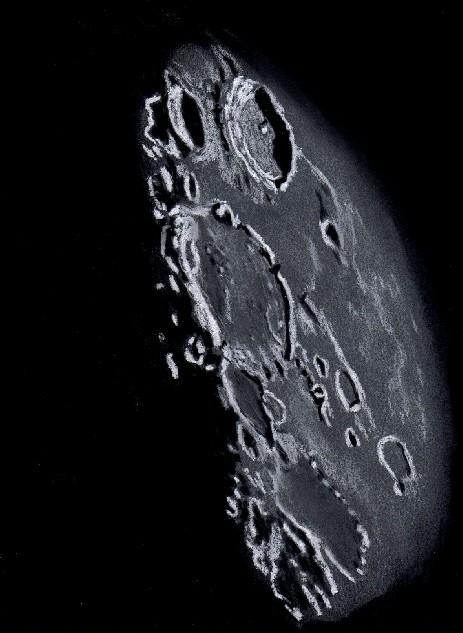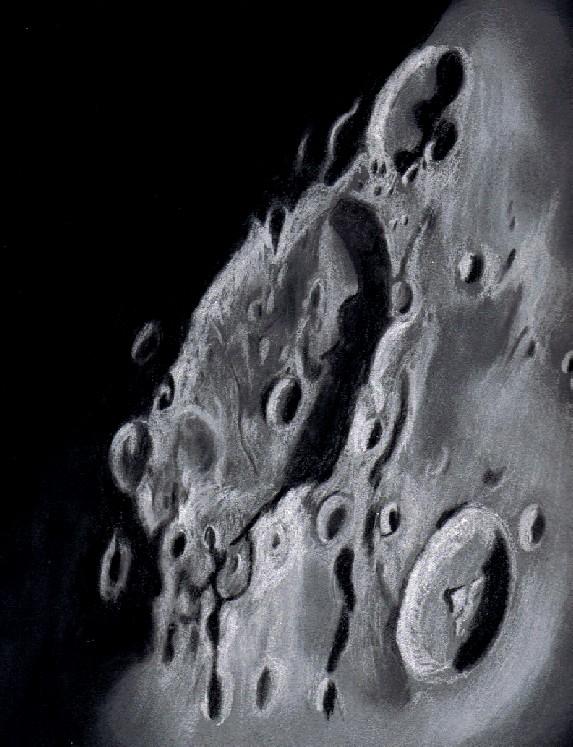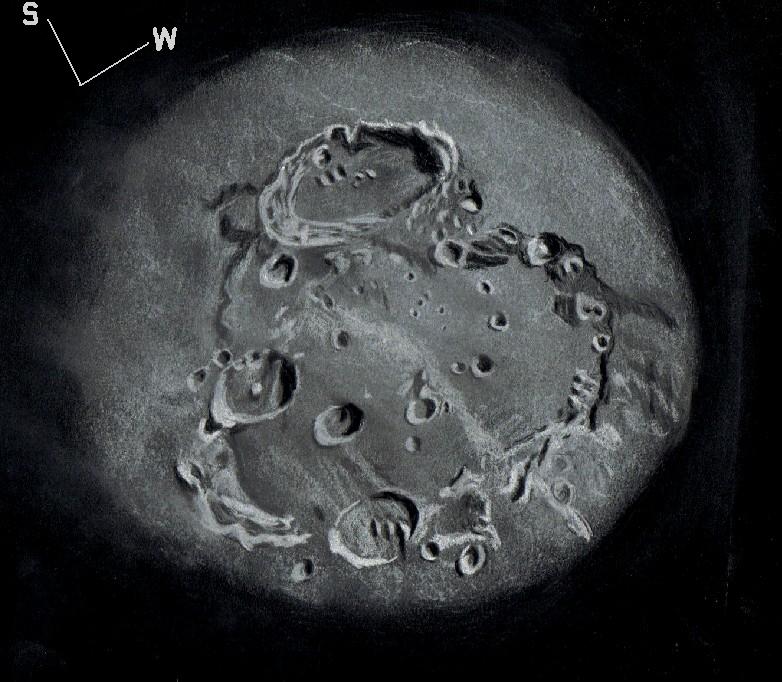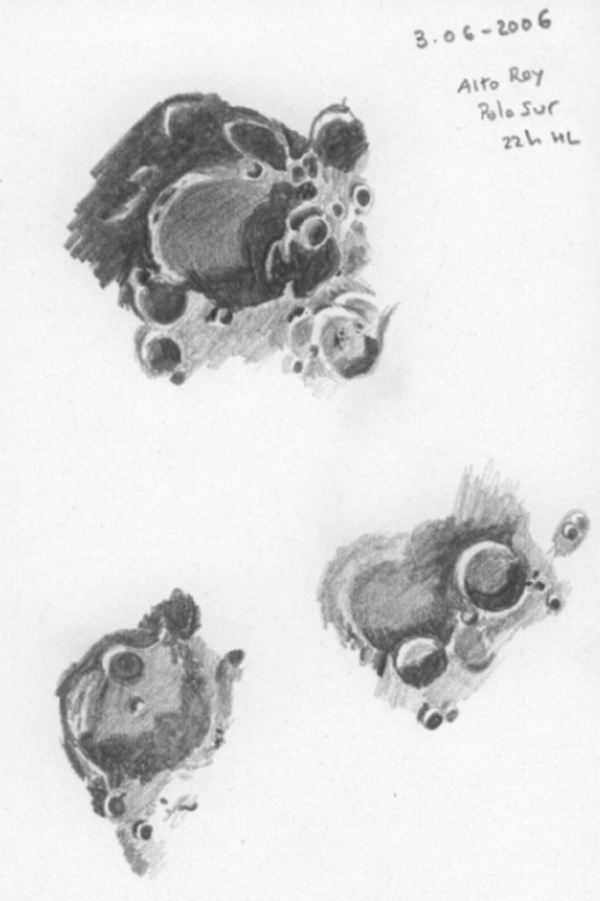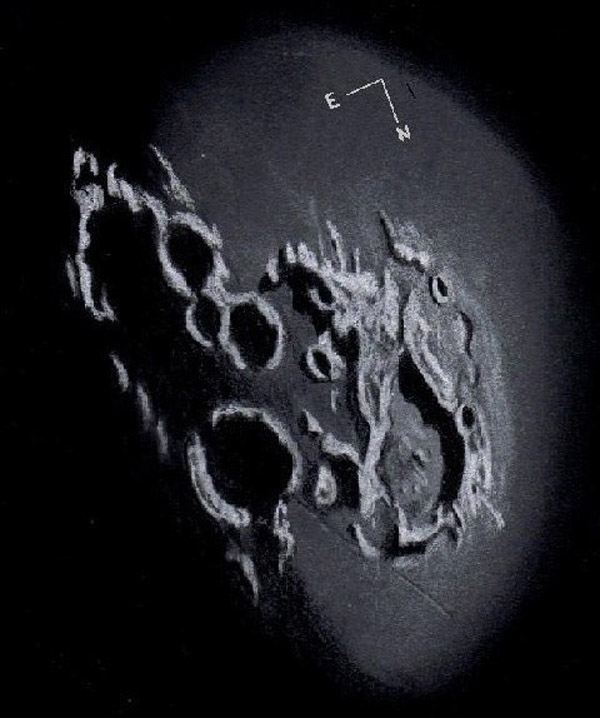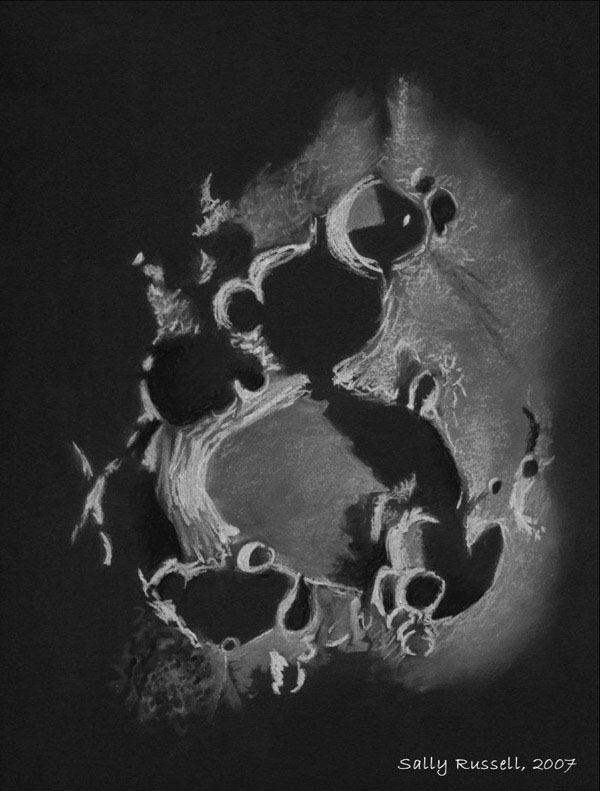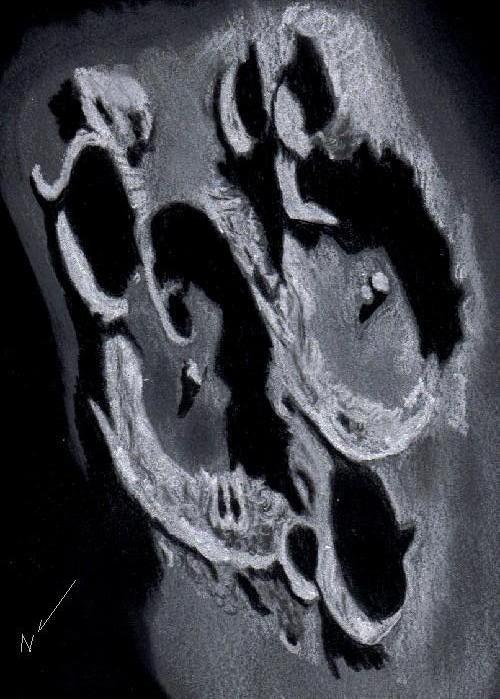
Rosenberger and Vlacq near the Terminator
By Frank McCabe
This region of the moon is often called the confusing southeastern lunar highlands
for all the large and medium sized look-alike craters. This appearance continues
to the lunar far side as can be see in lunar orbiter photos. But looking again the
picture really changes dramatically at low sun. The two large craters I have
chosen for this sketch are both ancient (pre-Nectarian) and pre-date the early
basin formation on the moon. Rosenberger crater (96 km.) is the largest of the
pair to the left (east) in the drawing. This four billion year old crater has a
rim worn down to the level of the surrounding highlands by numerous crater impacts
and inner wall subsidence that has obliterated most of the wall terracing. It is
2.6 kilometers from the highest rim point to the mostly flat crater floor which in
the low sun was showing off its low central peak. A crater of 14 km. was about to
be consumed by shadow at the time of this sketch. This floor crater is Rosenberger
S. The other large crater to the southwest of Rosenberger is Vlacq, a crater of 89
kilometers and from all appearances perhaps the youngest of the pair. The twin
peaked central mountains and terraced walls give this crater a younger look. It
also appears from the bulging of the wall shared with its larger neighbor that the
body that struck the moon forming Vlacq came in second.
The observing and sketching was enhanced by steady seeing intervals that lasted
several minutes at a time.
Sketching:
For this sketch I used: black Strathmore 400 Artagain paper, 9”x 10”, white and
black Conte’pastel pencils and a blending stump. Brightness was slightly decreased
after scanning.
Telescope: 10 inch f/5.7 Dobsonian and 6mm eyepiece 241x
Date: 11-28-2007 5:30-7:00 UT
Temperature: -3°C (26°F)
partly cloudy, breezy
Seeing: back and forth between Antoniadi II and III
Co longitude: 135.2°
Lunation: 18.5 days
Illumination: 80.3 %


